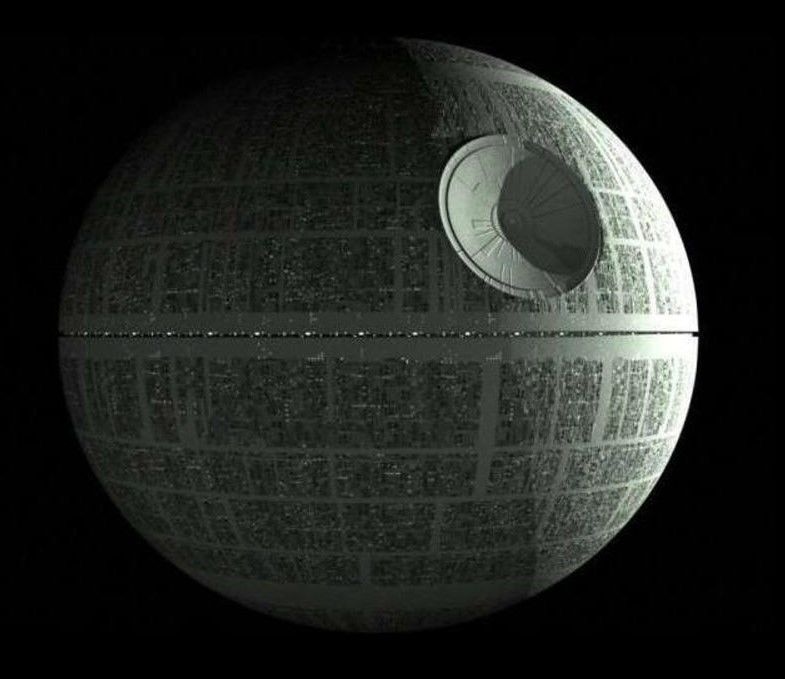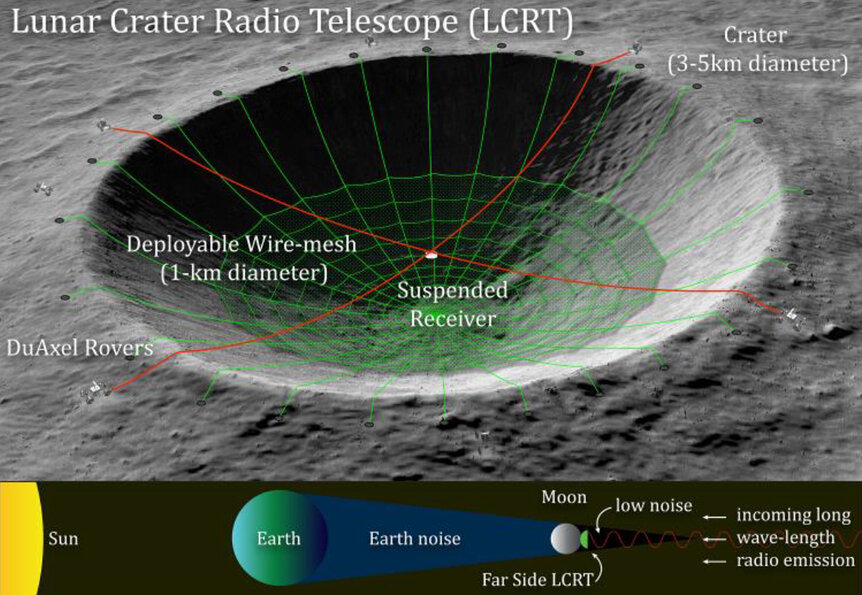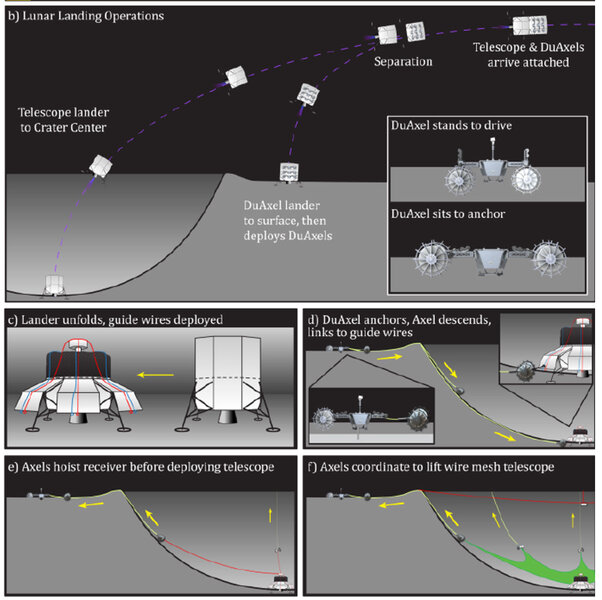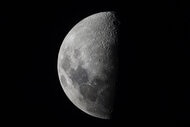Create a free profile to get unlimited access to exclusive videos, sweepstakes, and more!
Is that the Death Star? NASA investigating using Moon crater for giant telescope

Red 5 is certainly standing by with an eager eye on the new wild idea that NASA is throwing money at: an ultra-long-wavelength radio telescope built into a crater on the far-side of the Moon, which would create the the Solar System’s largest aperture-filled radio telescope, as well as the spitting image of the Death Star, presumably.
The NASA Innovative Advanced Concepts (NIAC) program has given PHASE 1 funding to the Lunar Crater Radio Telescope (LCRT) on the Far-Side of the Moon, which, as outlined by JPL Robotics Technologist Saptarshi Bandyopadhyay’s proposal, would be able to observe “the universe at wavelengths greater than 10m (i.e., frequencies below 30MHz), which are reflected by the Earth's ionosphere and are hitherto largely unexplored by humans.”
So yeah, throw on the Pink Floyd and trip out to this wild idea. Or perhaps John William’s "The Battle Of Yavin."
Bandyopadhyay’s plan involves sending two landers to the dark side of the Moon, far from any radio interference from Earth-orbiting satellites, the ionosphere, or even, at least during the long lunar night, the Sun. Once the landers reach their undisclosed crater, they’ll separate. The telescope lander will set down smack dab in the center of the crater, while the DuAxel lander will touch down on the surface above the sutitably deep crater.
Now this is where things get really innovative. The DuAxel lander will deploy transforming, wallclimbing DuAxel robot rovers. When they get to the intended destination, they'll drop anchor, and release one of its Axels, which will descend into the crater and meet up with the telescope lander, that has opened up and deployed guide wires. Multiple Axels will grab these wires, link them to the other Axel (remember when it was a DuAxel?) and then together they’ll hoist a receiver, then coordinate to lift the wire mesh to form a sphericalcap reflector.
Once in place, the 1km-diameter contraption would create the Lunar Crater Radio Telescope, the largest in our Solar System, which, according to the proposal, “could enable tremendous scientific discoveries in the field of cosmology by observing the early universe in the 10– 50m wavelength band (i.e., 6–30MHz frequency band), which has not been explored by humans till-date.”
While this idea is certainly a big one, it’s not necessarily new. China’s Chang'e-4 mission is currently conducting radio astronomy on the far-side of the Moon, thanks to the Netherlands-China Low Frequency Explorer mounted to China’s Queqiao communications satellite.
But when you’re talking about telescopes (or Death Stars), size matters.
(via Popular Mechanics)
















